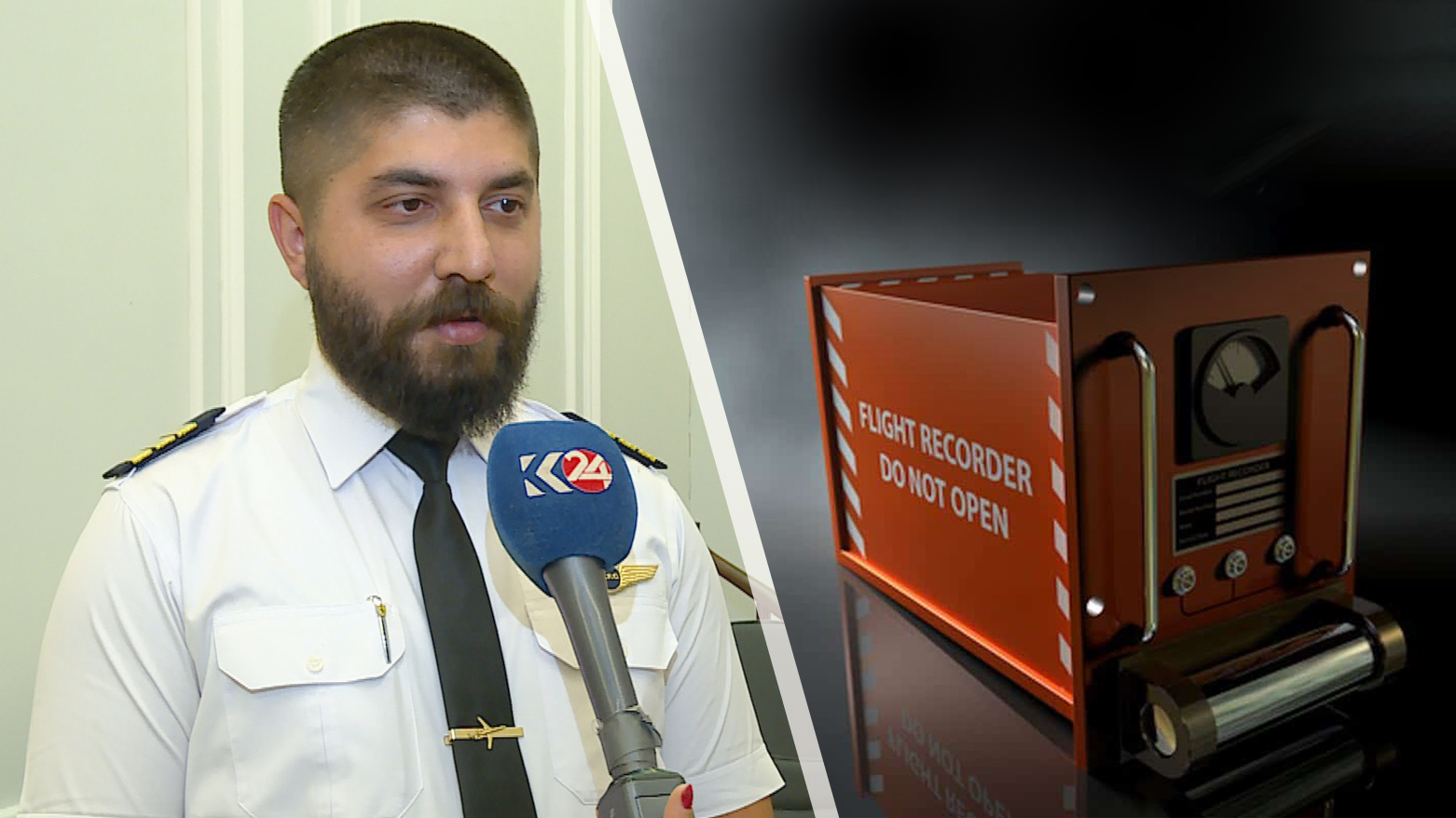Decoding the Airplane “Black Box”: Insights from a Kurdish Pilot
A veteran Kurdish pilot details the aircraft "black box": an orange, highly durable device that records flight data and cockpit audio, making it essential for investigating accidents and enhancing aviation safety.

ERBIL (Kurdistan 24) – In the aftermath of an aviation disaster, as investigators search for answers amid the wreckage, one piece of equipment becomes the single most critical source of truth: the aircraft’s "black box." Despite its misleading name, this bright orange device is the silent witness that records a flight's final, fateful moments, and in a detailed explanation for Kurdistan24, a veteran Kurdish pilot has shed light on its history, crucial functions, and incredible resilience.
Miran Salayi, who has been a pilot for many years, provided an in-depth look at the device that plays a key role in analyzing and determining the causes of air accidents. Speaking to Kurdistan24, Salayi addressed the common question of its name.
"There are several theories; one of the most common is that after World War II, the term 'black box' was used for any electronic device that simply received and sent information, like a secret box," he explained. However, the reality of its appearance is dictated by a far more practical need. "Although it's called a black box, its bright orange color is to ensure it can be easily found after incidents," Salayi noted.
According to the experienced pilot, this vital piece of equipment is comprised of two distinct and equally important components that work in tandem to create a comprehensive record of a flight's last moments.
The first is the Flight Data Recorder (FDR), which meticulously logs a vast array of technical information from the aircraft's systems. This includes crucial parameters such as its speed, altitude, headings, and the operational status of various systems.
The second component is the Cockpit Voice Recorder (CVR), which captures the human element of the flight, recording conversations between the pilots, all communications with air traffic control towers, and any other ambient sounds within the cockpit.
The combined data from these two recorders allows investigators to piece together a clear and detailed picture of the events leading up to an incident.
Salayi referenced the analysis of the Ukrainian airliner's black box as a stark example of the CVR's importance, where the device successfully recorded the pilots' conversations for up to 19 seconds after a missile explosion, providing invaluable information for the subsequent investigation. This ability to capture the final moments is a testament to the device's robust engineering.
The black box, Salayi explained, is purpose-built to survive the most extreme and violent conditions imaginable in a plane crash. The Kurdish pilot also mentioned that the black box is built to withstand the harshest conditions. Constructed from resilient materials like titanium and stainless steel, it is engineered to endure intense pressure and extraordinarily high temperatures, capable of withstanding heat up to 1100 degrees Celsius.
Its durability extends to aquatic environments as well. Salayi pointed out that if an aircraft crashes into water, the device is equipped with a pinger that can transmit acoustic signals from a depth of 20,000 to 30,000 feet, greatly aiding recovery efforts.
These crucial locating signals continue to be emitted for a period of 30 days, providing a critical window for search teams. Due to its paramount importance, the device is strategically placed in the rear section of the aircraft, an area that statistically sustains the least amount of damage during most crash scenarios, maximizing its chances of survival and recovery.
The information it holds is not just for understanding a single tragedy; it is fundamental to the entire aviation industry's mission to improve safety procedures and prevent similar disasters from happening again.
Kurdistan24's correspondent Nian Barzan contributed to this report.
